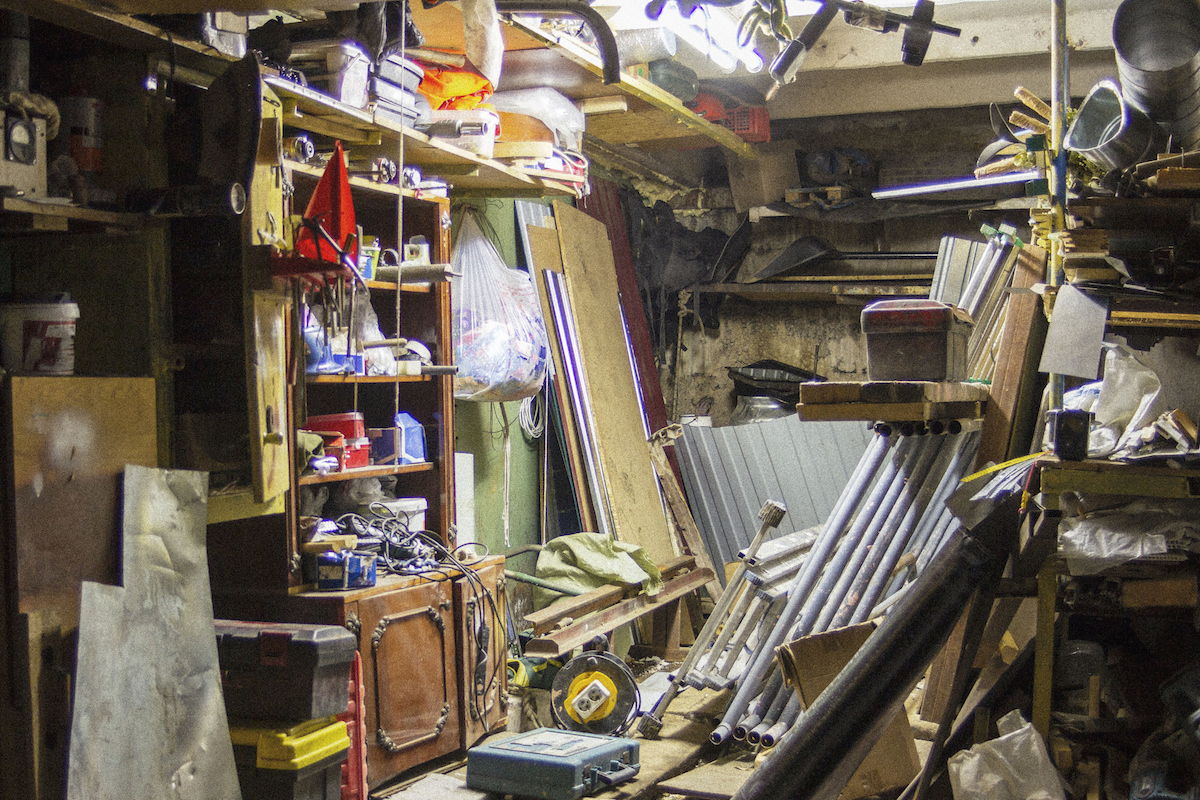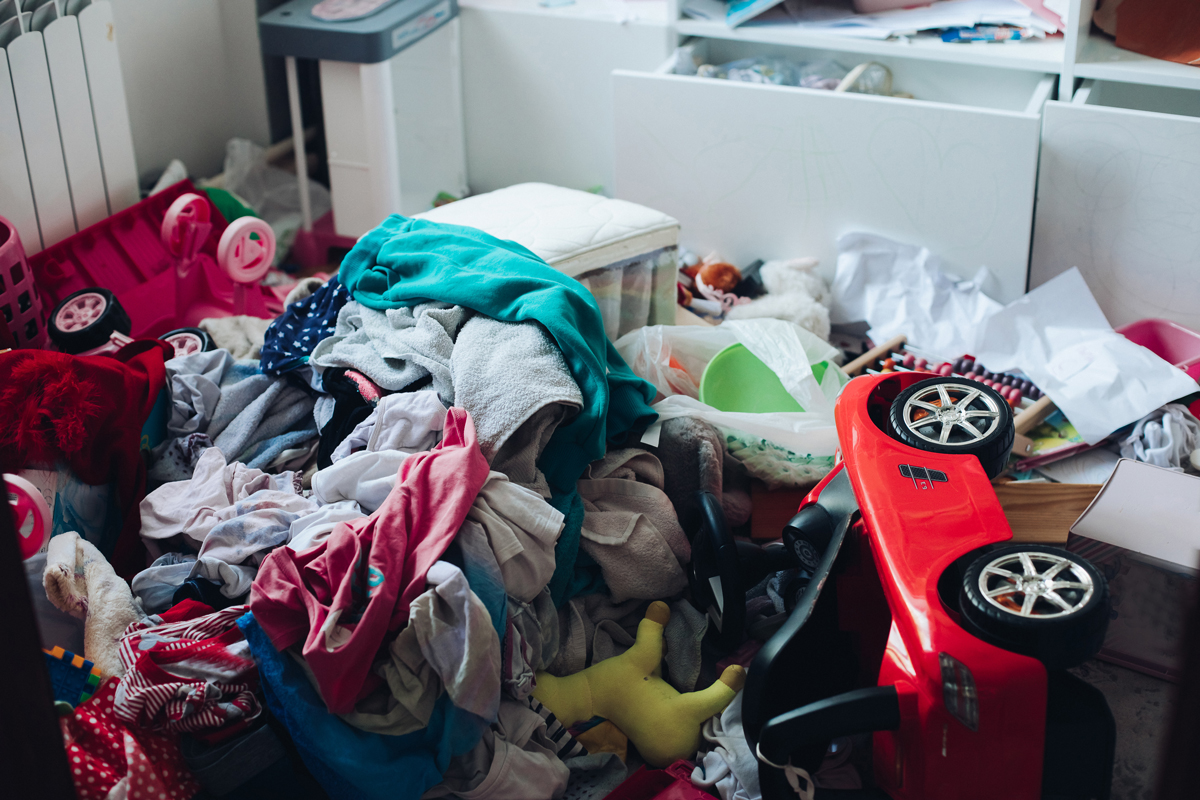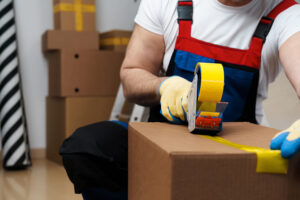Are you planning a move and feeling overwhelmed by all the stuff you need to pack up and take with you?
A decluttering process can be a challenging task, but it doesn’t have to be.
- Keep
- Donate
- Discard
Imagine feeling lighter and more organized as you prepare for your move. With our decluttering tips, you’ll be able to have a fresh start in your home without the burden of unnecessary belongings weighing you down.

What is Clutter?
Clutter is an accumulation of unused or unnecessary items that are disorganized and take up space in a living or working environment.
It can consist of various types of possessions, such as clothing, books, decorations, furniture, or utensils, among others.
It can be the result of a lack of organization over time or acquiring too many possessions and not having adequate space to store them. Often clutter is a source of stress and anxiety, making it difficult to focus on tasks or relax effectively.
By decluttering, we can reduce stress and anxiety, create more space in our surroundings, and be more productive. It can refer to physical objects that may be scattered around a room, as well as mental or emotional “clutter” that can take the form of negative thoughts or unresolved worries.
The U.S. Department of Energy reports that one-quarter of people with two-car garages have so much stuff in there that they can’t park a car. [1]
Benefits of Decluttering
Clutter can cause stress and anxiety, as well as restrict movement and productivity. Removing clutter can make a space feel more tranquil and improve a person’s quality of life. It can improve productivity, help make it easier to find essential items, and even make cleaning easier.
Decluttering can help reduce stress and anxiety by simplifying surroundings and improving mental clarity.
It can also lead to:
- Improved sleep
- Overall boost in feelings of well-being
- Reduced depression
Decluttering can help individuals regain control of their space and their lives, leading to a more balanced and fulfilling lifestyle.
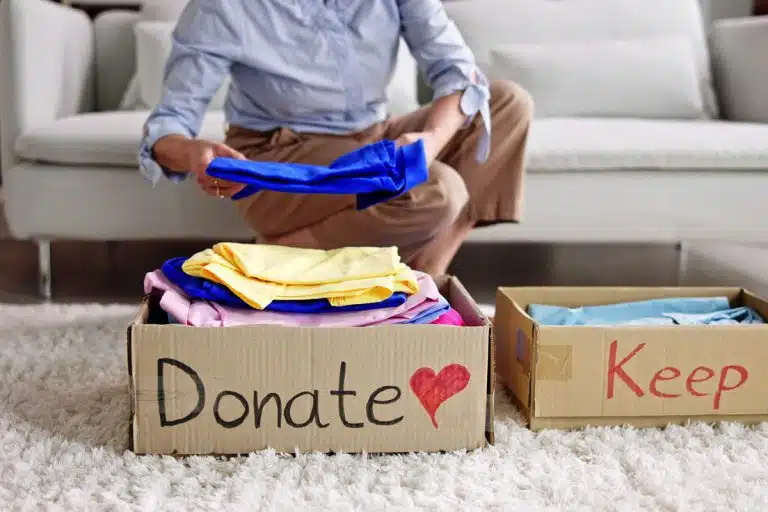
Challenges of Decluttering
Obtaining a clutter-free house can be a challenging and overwhelming task for many people. One of the main challenges is finding the motivation to start and stick to the process.
It’s common to become distracted or discouraged easily, especially when faced with sentimental items or difficult decisions about what to keep or discard.
To declutter your house requires a significant time investment, and it can be difficult to find continuous chunks of time to dedicate to the process.
Some people may struggle with letting go of items that they feel are making them happy or providing them with comfort.
Any progress in decluttering, no matter how small, can help improve the overall quality of life and create a more manageable and peaceful environment.
Types of Clutter
Sentimental Items
Photographs, keepsakes, gifts, or other mementos are tied to important events or relationships in a person’s life and therefore are sentimental. Sentimental items can be challenging to declutter because they often hold a deep emotional attachment, and their removal can feel like letting go of a part of one’s past.
One strategy for decluttering sentimental items is to take a moment to reflect on the memory or emotion that the item represents and consider whether it truly adds value to one’s life in the present. This is part of Marie Kondo’s method of decluttering.
Marie Kondo is a professional organizer known for her decluttering method called the KonMari Method. This method is based on the idea of keeping only items that spark joy in your daily life, and decluttering the rest. The process starts by sorting items category by category rather than room by room.
The KonMari Method recommends doing a visual inventory of every item within the category and then determining which items spark joy.
If an item does not create joy or serve a purpose, it is time to thank the item for its service and let it go. The method encourages respecting the items that have served you well by disposing of them in a thoughtful and considerate manner, such as through donation or recycling.
Paper Clutter
Old bills, receipts, letters, magazines, and other paper-based items can pile up quickly and make it challenging to find important documents when you need them.
Clutter creates visual noise that can distract from work and is often a source of stress.
Decluttering paper can feel overwhelming, but it is essential to develop an organized system for managing it to prevent future build-up.
Starting by sorting through the papers and separating them into categories can be a helpful way to identify what needs to be kept or discarded.
Once this is done, creating a filing system can help organize the remaining papers in a way that enables efficient access to what is needed while keeping the physical space tidy.
Regularly reevaluating and purging unnecessary paper clutter will help keep the space clear and improve concentration and productivity.
Miscellaneous Items
Miscellaneous items are those that do not have an obvious place or category and can end up scattered throughout a space.
These might include:
- Chargers
- Craft supplies
- Items in desk drawers
- Loose change
- Mobile phones
- Pens
- Remote controls
- Small items
- Special occasion items
While each of these items may seem too small to worry about on their own, they can add up to make a space feel cluttered and disordered.
With so many miscellaneous items, it can be challenging to find a home for each of them. Often they end up located in the nearest junk drawers.
Creating a designated spot for each item or implementing an organization system can ensure that these miscellaneous items are no longer treated as clutter and instead contribute to a more organized home or workspace.
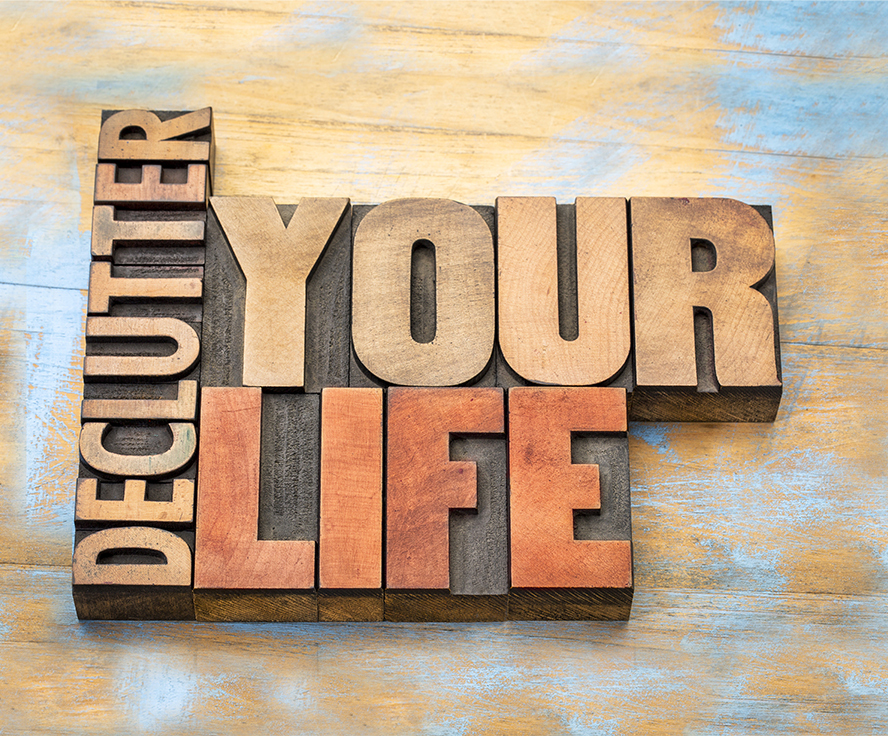
Physical Space
Physical space and decluttering are intimately linked, as getting rid of unnecessary items can make the whole house feel more open and organized.
The accumulation of physical clutter in a home or workspace can make it difficult to move or find everyday items, negatively affecting productivity and mental health.
According to researchers at UCLA’s Center on Everyday Lives and Families (CELF), clutter has a profound effect on our self-esteem and our moods.
A study of 32 families found a link between high cortisol (stress hormone) levels of women who had a high density of household objects. Men were not as impacted by the piles, but researchers did not document the added stress of this area of potential tension or level of tolerance for clutter between men and women. [2]
Keeping a tidy space results in increased functionality of spaces, facilitating free movement and convenient access to necessary items. It can also liberate spaces and facilitate positive energy flow in a home or workspace, ultimately leading to a happier and more productive lifestyle-so take a deep breath and get started.

Decluttering Types
Sort Items by Category or Room
When decluttering by category, items can be grouped together based on similar types, such as clothing, books, or kitchenware.
This approach can make it easier to evaluate the exact number of items in each category and determine which ones are essential and which ones can be discarded.
Decluttering can be done by room, including:
- Bathroom
- Bedroom
- Den
- Kitchen
- Living room
This approach can help to place focus on the specific area that is cluttered.
Take the time to reduce the overall clutter and improve the order of your living space.
Evaluate Items Before Choosing to Keep It
Before deciding to keep or throw away an item, evaluate its purpose, usefulness, and importance.
Start by asking yourself the following questions:
- Do I use this item regularly?
- Does this item have sentimental value or meaning to me?
- Does it contribute to my overall well-being or happiness?
- Would it be challenging to replace this item?
By evaluating items in this way, you’ll be better positioned to decide whether an item is essential or not and whether it’s something that should have a place in your life.
It might be useful to determine if the item has outlasted its purpose and take a moment to appreciate how it has served you well for its intended use.
Decluttering allows you to maintain an environment with items that offer value or utility in some way, which can help keep it organized, functional, and enjoyable to live and work in.
If an item is no longer serving a useful purpose, donating or recycling it can be a better alternative than keeping it.
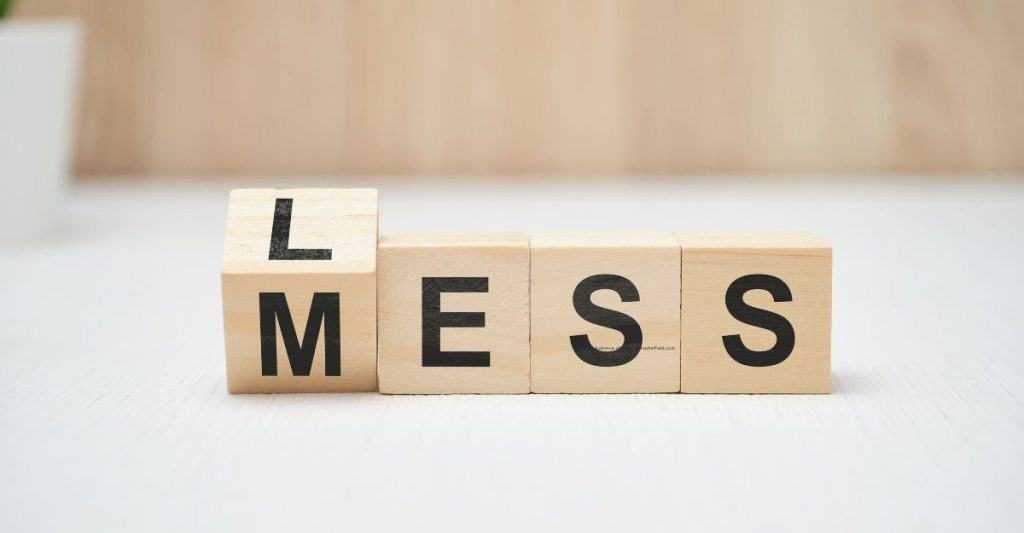
Take it One Step at a Time
Don’t try to tackle the whole space all at once. Break the task down into smaller, more manageable pieces and focus on one area at a time.
Start by decluttering a single closet, a bookcase, or your work desk. By breaking down the task into smaller and more manageable portions, you’ll be able to accomplish each task more efficiently.
This will give you the motivation and confidence to keep moving forward, and before long, you’ll find yourself making significant progress toward decluttering your space.
Remember to take breaks, avoid getting too worked up by each task, and celebrate each win as you declutter your space one step at a time.
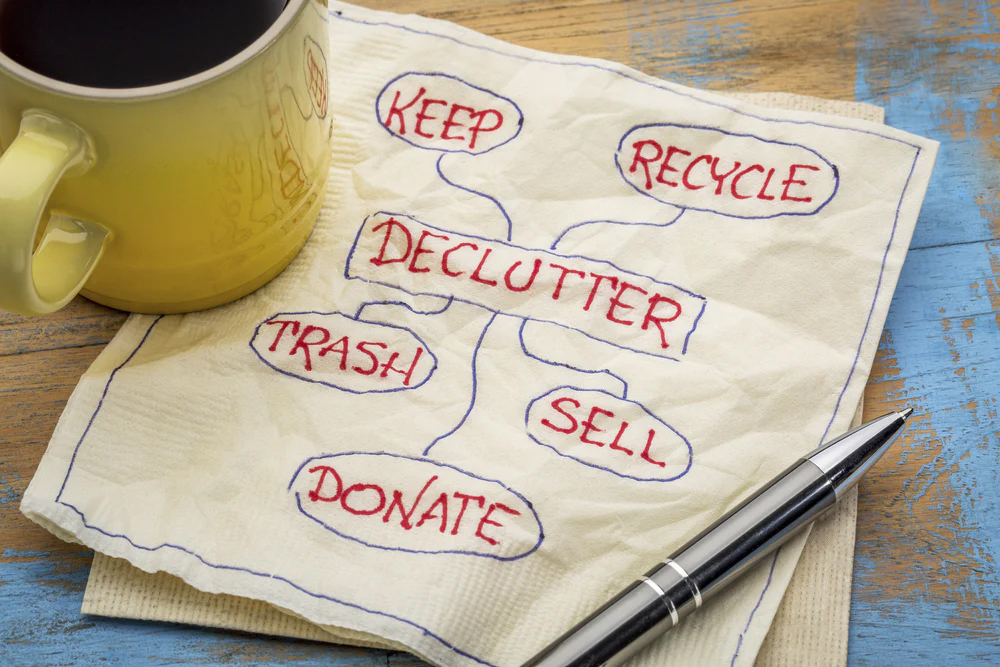
Purge Unwanted or Misplaced Items
Fifty-four percent of Americans are overwhelmed by the amount of clutter they have, but 78% have no idea what to do with it. [3]
One way to make purging unwanted items easier is by asking yourself whether the item is useful, is loved, or serves a specific purpose.
Think carefully before making any decisions but stay firm once you have made them. Resist the temptation to hold on to items that could be useful in the future or “just in case.”
Be brave and discard, recycle, or donate the items that do not serve a definite purpose in your life, or take the space that could be used more meaningfully in other ways.
If you have food in your pantry that will not be used, make sure your decluttering plan includes letting go of unwanted baking supplies or sending select food items to the food bank.
A decluttering project can be a liberating task. Take your time, be patient, and make thought-out decisions.
Soon you will begin to see the benefits of living in an unencumbered and tidy space that you can appreciate and enjoy without feeling weighed down by clutter and stress.
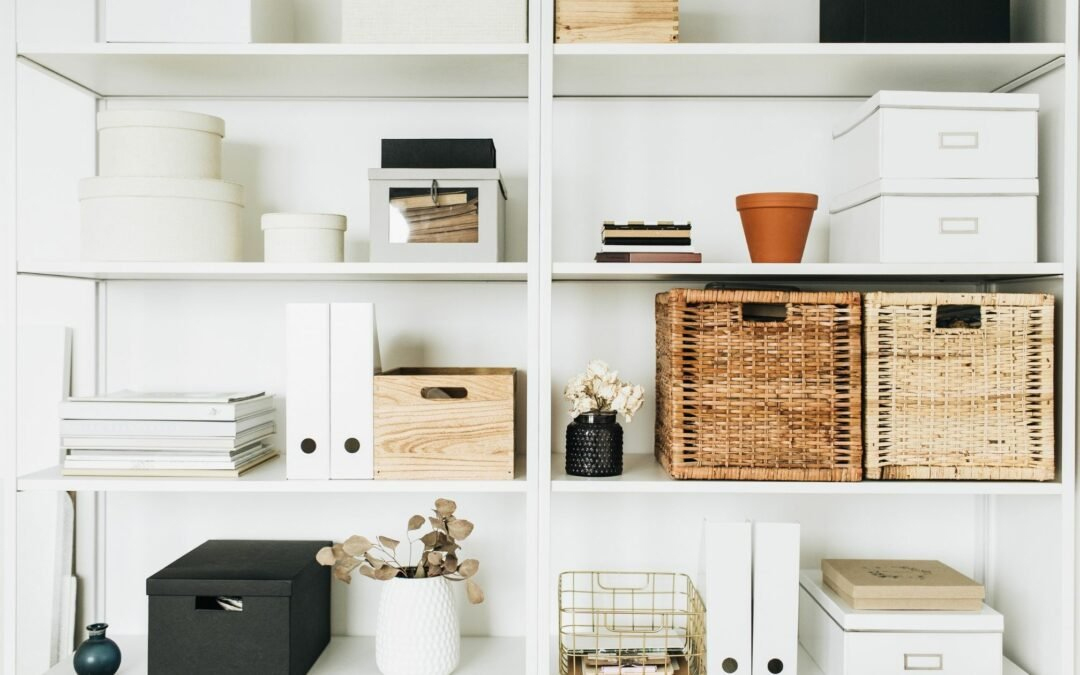
Utilize Vertical Space for Storage Solutions
Instead of leaving items lying around cluttering up the ground, take full advantage of every inch of available space vertically using
- Hooks
- Pegboards
- Shelves
- Stackable drawers
Vertical storage solutions can accommodate a variety of items and can even turn wasted space into useful storage space, helping to clear clutter and create more floor space. This is an often overlooked option in the decluttering process.
Installing floating shelves can create additional storage for books, pictures, or other smaller items that don’t necessarily require a whole cabinet.
Wall-mounted hooks can be excellent for hanging hats, coats, and jackets. Hanging a pegboard in the kitchen or garage can provide ample space to store utensils and tools without taking up too much floor space.
Keep things labeled and organized so that they are easy to find when you need them, and don’t be afraid to experiment with different storage solutions to find what works best for your entire house. Free up cluttered space and make it easier to keep the surrounding area looking neat and tidy.
If you find that your space is still feeling cluttered even after decluttering, storing items in a Pro Move Storage, storage unit can be a great solution.
By renting a Pro Move Storage, storage unit, you can store items that are not used very often and free up much-needed space in your home or office. Contact Pro Move Storage today to schedule a consultation and get started on your decluttering journey. Don’t let unnecessary items hold you back in your new home – let us help you make the transition with ease.
Sources:
[1] Becker, J. (2010, January 19). The Statistics of Clutter. Becoming Minimalist. https://www.becomingminimalist.com/the-statistics-of-clutter/
[2] W. (2016, February 1). A clean, well-lighted place – Stanford BeWell. Stanford BeWell. https://bewell.stanford.edu/a-clean-well-lighted-place/
[3] Poplin, J. (2019, December 17). Statistics on Clutter That Will Blow Your Mind – The Simplicity Habit. The Simplicity Habit. https://www.thesimplicityhabit.com/statistics-on-clutter-that-will-blow-your-mind/
